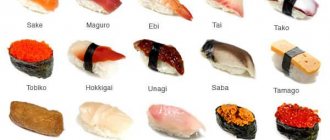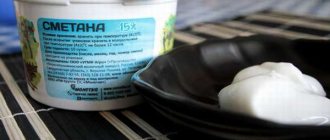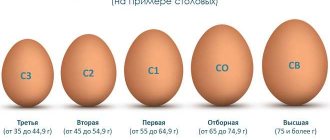Fish spoils very quickly, so immediately after catching it is either eaten or frozen.
This process has certain features that must be taken into account in order to avoid poisoning from eating such a product.
Read the article about the temperature at which frozen fish should be stored, how long it can stay in the freezer, what mistakes should be avoided during storage, and more.
Shelf life and shelf life
Shelf life and expiration date are two different concepts that are related, so many people often confuse them.
The shelf life of fish is the period during which its consumer qualities remain unchanged, which means it can be eaten without fear of health.
The shelf life is the time after which the product cannot be eaten. When it runs out, the fish becomes dangerous to health, as pathogenic microorganisms begin to multiply in it.
The shelf life of frozen fish may vary after opening the original packaging. For example, if it is in a vacuum, it remains edible for 9 months.
Once the integrity of the package is compromised, it may be reduced to 3 months or less. The manufacturer must indicate this information on the label. The shelf life of frozen fish varies from 2 to 10 months.
These indicators are influenced by:
Type of fish. For example, saury is stored for no more than 2 months, and pollock for about a year.- Freezing method.
If the fish was frozen naturally, the shelf life is shorter compared to shock or dry freezing. In the latter case, it is exposed to temperatures of -30 degrees. - Storage conditions. If a product is kept at a temperature of -18 degrees in a regular refrigerator, then it will spoil faster than one that is in industrial chests, where the temperature drops to -25 degrees.
Storing salted fish
The length of the storage period directly depends on the amount of salt used to prepare different varieties.
Storing directly in brine significantly increases the shelf life of the product.
The optimal temperature range is within 0…+3 degrees.
| View | Saving period |
| Lightly salted salmon (homemade) | 2-3 days |
| Herring in brine | 2-3 weeks |
| Salmon in a vacuum | 1 month |
| Fatty mackerel | 10 days |
| Highly salted without freezing | 1 month |
| Medium salted, marinated | 2 weeks |
| Lightly salted | 6 days |
| Pieces of products (salmon, herring, salmon) in vegetable oil | 3 months |
Legislative norms
Fish is one of the main food products of Russians, so the state has developed standards for its storage, which must not be violated. In particular, this process is regulated by GOST 32366-2013 “Frozen fish. Technical conditions".
The document states that the storage temperature of any frozen fish should not be lower than -18 degrees .
The packaging of frozen fish must contain information about its expiration date, storage mode, freezing method, batch number, packing date, etc. These indicators are regulated by GOST 7630-96.
How long can salted herring be stored?
The shelf life of herring depends on the conditions in which the product is located
| Storage conditions | Saving period |
| No freezing | 2-3 hours |
| In brine (refrigerator) | 30 days |
| Lightly salted in brine | 7 days |
| In brine (cellar) | 10 days |
| In beer brine | 1 Week |
| In vegetable oil | 4 days |
| Closed vacuum packaging | Up to 35 days |
| In an opened vacuum container | No more than 2 days |
| Opened preserves | 1 day |
| In the marinade | 4 days |
How long do different types of fish last?
The composition and structure of fish meat varies depending on its type. More detailed information is presented in the table:
| Types of fish | At a temperature of -18 degrees (in months) | At a temperature of -25 degrees (in months) |
| Carp, catfish, pike, whitefish | 8 | 10 |
| Flounder, halibut, salmon, cod | 6 | 7,5 |
| Mackerel, herring, mackerel, tuna, navaga | 4 | 5 |
| Horse mackerel | 5 | 6 |
| Caspian and Baltic sprat, tuna | 3 | 4 |
| Anchovy, sardines | 2 | 2,5 |
| Sea bass | 4 | 6 |
| Sturgeon | 7 | 12 |
| Flounder | 4 | 6 |
| Pink salmon | 7 | 9 |
In attics or basements
In order to store fresh fish in the attic or basement at a temperature of -1-+5 degrees, it should be scaled, gutted, and the gills removed. After this, you can do one of two things - place it in a plastic container and cover it with ice or sprinkle it generously with salt. In this form, the fish will be perfectly preserved for 48-72 hours without compromising its consumer qualities.
Yandex pictures
It is important to ensure that the attic or basement is not too damp. If ice is used, it is important that it does not melt - in this case, water will be absorbed into the fish and the meat will become watery and begin to spoil faster. If the fish has been sprinkled with salt, it will have to be soaked before use.
Conditions
Storage conditions for frozen fish:
Immediately after catching, the fish should be placed in a cool place, for example, in a cooler bag, or covered with ice. If it has been lying around for several days, then it should not be frozen.- The temperature in the freezer should not be lower than -18 degrees.
- The product must be packaged in insulating material: film, vacuum bag, cellophane, release paper.
- Small fish can simply be poured into a container and closed with a lid. It is recommended to lay large carcasses in rows, backs up.
- It is better to store fish on the bottom shelf of the chamber. It is opened less often, which means it will not be regularly exposed to warm air.
- From time to time, carcasses should be inspected for mold or rust. You need to store fish by variety, as they have different expiration dates.
- It’s good if it is possible to allocate a separate shelf for fish products.
If all conditions are met, then in terms of taste and benefits, frozen fish will not be inferior to chilled fish.
Preparation for storage
Shelf life of different types in the freezer
Rules for storing fish include a preliminary preparation stage. The algorithm is quite simple:
- Raw fish must be scaled and giblets removed.
- Wash top and inside, dry with napkins or paper towel.
- If you are going to store the product for about two days, then you need to sprinkle with salt or sprinkle with lemon juice.
- Transfer the fish to a storage container, wrap it with cling film or close it tightly with a lid.
There is no need to wash finished fish fillets before storing them in the refrigerator.
Smaller fish, such as roach or perch, can be frozen without gutting them - then they will better retain their taste and juiciness. But it is not recommended to freeze burbot at all - this fish is tasty only fresh.
There are ways to preserve fresh fish without refrigeration, invented by our ancestors at a time when no one dreamed of this technological miracle. In order for fresh fish to last 2-3 days, you need a cool and well-ventilated room. You need to do the following:
- clean from scales, gills, entrails, fins;
- wipe dry with a towel;
- rub the carcass on all sides with spices (usually salt and ground black pepper are used);
- wrap the fish in cotton cloth soaked in a solution (200 ml of vinegar and 2 teaspoons of sugar);
- Cover the inside and outside with coarse salt.
If you plan to freeze the carcass, then you need to put it in a plastic bag. It is recommended to divide a large specimen into small portions.
At what temperature?
Fish can be considered frozen if it is stored at a temperature of -18 degrees. If it is lower, then processes are activated in the product, leading to its accelerated deterioration.
The temperature in the freezer is affected by how busy it is . If there are few products, you can set the values to -18 degrees. When filled to 80-100%, the controller is set in the range of -20...-25 degrees.
It is better not to allow full loading, as “warm pockets” form in the chamber, which negatively affects the storage of carcasses. The door should always be tightly closed.
In industrial freezers, fish are kept at temperatures of -25 and even -30 degrees. This extends the shelf life of the product by several months.
How to defrost fish
Fish that has been frozen must defrost correctly. It is optimal when the carcasses or their parts thaw on their own - first in the refrigerator compartment, and only then at room temperature (+18...+25 ̊C). When you plan to use a fish product for soup or as part of another dish, it is permissible to use a semi-thawed product. When planning to bake or fry, the seafood must be completely defrosted. It is forbidden to refreeze seafood - if it is completely thawed, it must be heat treated.
Common mistakes
Common mistakes made when storing fish in the freezer:
Storing uncut product.
The shelf life can be extended by removing the internal organs and gills from the fish. They contain microorganisms that accelerate the decomposition process of carcasses.- Stowing a product without packaging.
When direct contact with low temperatures occurs, meat gets a “cold burn.” This leads to a deterioration in its appearance and taste characteristics. The meat will acquire a hard fibrous consistency, the aroma of the fresh product will disappear, and the process of fat hydrolysis will begin, which will cause the appearance of an off-flavor. - Re-freezing. If the product has been defrosted, it should not be placed back in the freezer.
- Lack of markings. Information about the date the carcasses were placed in the freezer should be written on the packaging material. It is very easy to forget the expiration date, and the consequences of eating fish that has expired are quite serious.
What we definitely do not recommend doing and why:
Defrost in hot or warm water
- Absolutely not! Simultaneously with defrosting, the process of denaturation (destruction of structure) of the protein and preparation of the product begins. The fish absorbs water, releasing its own juice and microelements and eventually falls apart
Defrost in the microwave
- The picture is similar to defrosting in hot water, but still this is a more acceptable option in the most extreme cases
Thaw fish at room temperature
- Of course it's not fatal. If you are limited in time, but you still need to prepare dinner for the whole family and the only way out is to take it out of the refrigerator in the morning and leave it on the table, then leave it. But keep in mind that after some time the process of reproduction of harmful bacteria will begin on the fish, and the longer it lies idle at room temperature, the more harmful this process will be
- In this case, we recommend cooking even fish that has not completely thawed - most likely, its structure will suffer, but the fish will be as fresh as possible
Refreeze fish
- If you suddenly changed your mind or didn’t have time to cook the fish, and then put it back in the freezer (or defrosted it at room temperature and left it in the refrigerator for tomorrow) - you know what we will say about this. Definitely NO! The fish will lose a huge part of all its taste and beneficial properties, it will become dry, hard, tasteless, and its fibers will be destroyed as much as possible and in the end you will get not a fish, but a washcloth
Consequences of incorrect product content
Improper storage of the product can lead to the following consequences:
- reduction of shelf life and spoilage of carcasses;
- shrinkage, during which the consistency of the meat changes, the smell and color of the meat changes;
- triggering the hydrolysis of fatty acids - the skin turns yellow, a foreign odor appears;
- the appearance of mold and putrefactive decomposition of the product occurs when it is not frozen;
- darkening of the surface upon contact with air;
- absorption of foreign odors - this occurs if the carcasses were not hermetically packaged;
- weakening of the consistency of the fibers, separation of muscle tissue occurs during slow freezing.
The influence of cooling procedures on product quality
According to the technology, only live fish or fish that have just fallen asleep are subjected to cooling. The period for which chilled fish can be stored depends on the degree of thermal conductivity of certain types. It is this indicator that affects how long a fish carcass of a particular type can remain refrigerated without compromising its quality. At the same time, there is a difference in the duration of cooling measures and the final shelf life. They depend on the following factors:
- carcass fat content;
- ambient temperature indicators during cooling;
- size of the individual.
During the cooling event, the tissue density increases. At the same time, the blood becomes thicker, and the weight of the carcass decreases, as excess moisture evaporates from the surface of the fish. The higher the humidity in the room where the product is cooled, and the lower its fat content, the more mass is lost. There is also a dependence on the method of cooling - if on ice, then the weight decreases more, and when in a liquid medium, the weight decreases less.
How can you tell if your fish has gone bad?
The following signs indicate product damage:
- discoloration of meat, scales and skin - yellow and whitish areas are an obvious sign of spoilage;
- weight change - spoiled fish becomes lighter;
- the appearance of mucus after defrosting - it indicates a bacterial infection;
- deep biochemical changes are indicated by a garlicky or putrid odor;
- the smell of hydrogen sulfide indicates that the breakdown of proteins was started before the product was frozen;
- When bacterial decomposition of meat occurs, an ammonia smell appears.
How to extend shelf life
To extend the shelf life of fish, use the following tips:
- wrap the carcass in a cloth soaked in salt water;
- wrap the fish with grape leaves and foil on top;
- Store the product not in the refrigerator, but in the freezer.
What are the signs of a spoiled product?
A spoiled product has the following characteristic features::
- unpleasant odor;
- sticky scales;
- gray gills and sunken, dull eyes;
- the meat is too soft and falls off the bones easily;
- change from red to gray (for salmon);
- does not sink, floats in water.
What product can be kept in the refrigerator?
The issue of storage in a refrigerator should be decided taking into account the temperature distribution in it. It should be taken into account that on the coldest shelves the temperature is maintained in the range of 0-3 degrees, and in the lower part 2-6 degrees. This temperature is not enough for long-term storage of most types of fish products.
The average shelf life is 2 days. Within this period, you can keep any fish in the refrigerator, except frozen. At these temperatures, ice begins to melt and the product begins to defrost. It will not be possible to store live fish in the refrigerator.
Storing minced fish
After preparing minced meat and purchasing it in a supermarket, it can be stored for 6 hours by placing it in the refrigerator. Next you need to use it for cooking. If there is any minced meat for future use, it must be frozen. Store at a temperature of -6-18°C – 3 months. It is permissible to leave purchased packaged minced meat in a cold place for a day. An important requirement is not to damage the integrity of the packaging.
Fish is good for humans, has a positive effect on the heart, immune system, blood vessels, and serves as a prevention of cancer. It contains omega 3 acid, proteins, vitamins, phosphorus, and calcium. To maintain the balance of nutrients in the body, you need to consume only proven quality foods. It is necessary to check the date of manufacture on fish products if they were purchased in a store or put a mark on home-made products. After the expiration date, be sure to dispose of the seafood product.
Determining the freshness of goods arriving at their destination
Transported products can be chilled in the form of whole uneviscerated carcasses or with the gills removed. In addition to the above, fish with completely cleaned insides or cut into small pieces can be transported chilled. Well-chilled and fresh fish always has a certain list of characteristics. You can suspect that seafood was transported with violations if the product does not meet the following criteria:
- There is no unpleasant odor other than the characteristic fishy one.
- The color of the carcasses is completely natural - there are no suspicious areas with a modified color.
- The surface of the fish is intact, without damage or contamination.
- When pressed, the meat is firm or slightly soft, but not falling apart, or flabby.
- The eyes of fresh chilled fish are transparent and bulging.
- If the gills are not removed, they are colored pinkish or reddish and covered with colorless transparent mucus.
When the refrigerator doesn't work...
How to store fish if for some reason you are forced to do without a refrigerator. In this case, you can resort to small tricks.
Remember the famous saying about where fish rot? That's right, from the head! Therefore, first it is necessary to remove the gills along with the giblets. Nettle leaves, which should be placed around it, will help the fish survive longer. In addition, experienced fishmongers place crushed nettle (you can also use wormwood) or a slice of bread soaked in vodka in the space between the gills. This helps the product maintain freshness for up to 5 days.
It is also recommended to grate the fish with salt and ground pepper. After such manipulation, it must be hung in a fairly dark place, having previously been wrapped in gauze or a fly net.
Another trick to avoid refrigeration: cut the fish along the spine, sprinkle it with rock salt and wrap it in a cloth soaked in vinegar seasoned with a few grams of sugar. The fish will remain fresh for a couple of days.
And one last parting piece of advice: fish products are extremely tasty and healthy, but at the same time they are highly toxic at the first signs of spoilage, so at the slightest suspicion of rottenness, do not hesitate to get rid of them - health is more important!











